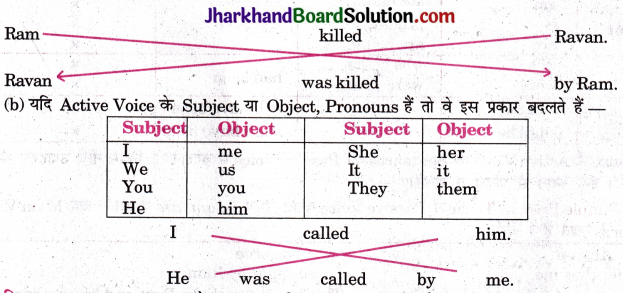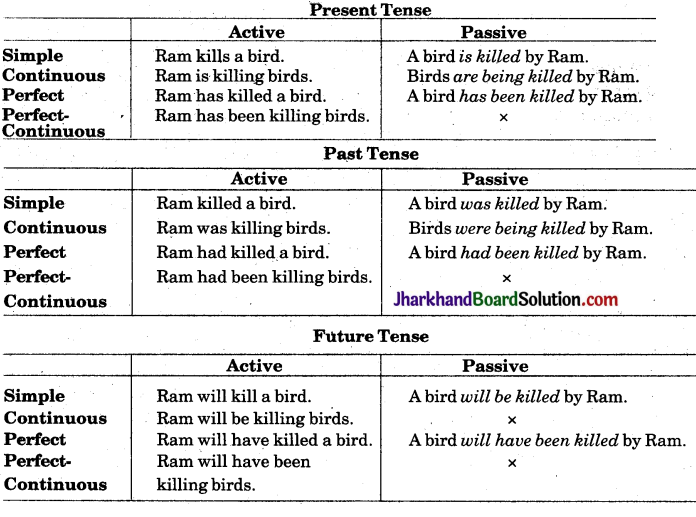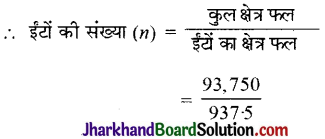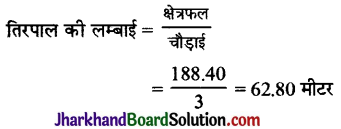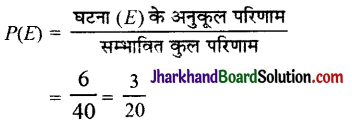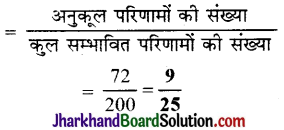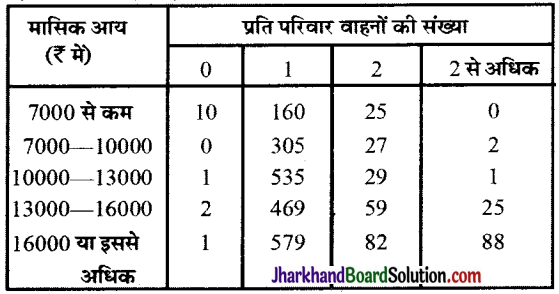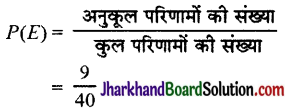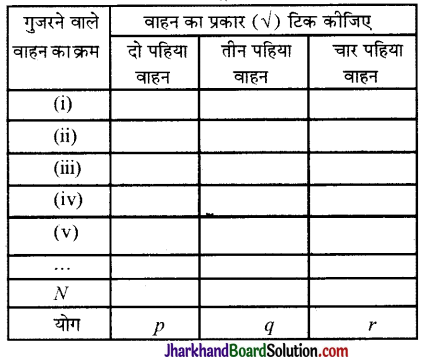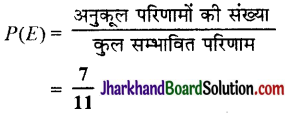Jharkhand Board JAC Class 9 English Solutions Moments Chapter 3 Iswaran the Storyteller Textbook Exercise Questions and Answers.
JAC Board Class 9 English Solutions Moments Chapter 3 Iswaran the Storyteller
JAC Class 9 English Iswaran the Storyteller Textbook Questions and Answers
Think About It
Question 1.
In what way is iswaran an asset to Mahendra?
ईश्वरन महेन्द्र के लिए किस प्रकार एक महत्वपूर्ण व्यक्ति है ?
Answer:
Iswaran is Mahendra’s servant. He cooks food for Mahendra, washes his clothes, cleans his tent or his room. He entertains him also. Iswaran is not only a perfect and cook but also a very good storyteller. Iswaran has so many qualities, so without him it is not possible for Mahendra to settle comfortably at that desolate place where there are very few facilities. Thus he is an asset to him.
ईश्वरन महेन्द्र का नौकर है । वह महेन्द्र के लिए खाना पकाता, उसके कपड़े धोता है और उसका तम्बू या कमरा साफ करता है। वह उसका मनोरंजन भी करता है । ईश्वरन एक बहुत अच्छा रसोइया ही नहीं है बल्कि वह बहुत अच्छा कहानी सुनाने वाला भी है । ईश्वरन में अनेक गुण हैं, अतः उसके बिना अपर्याप्त सुविधाओं वाले उस निर्जन स्थान पर महेन्द्र के लिए आराम से रहना असम्भव है । इस प्रकार वह उसके लिए अत्यंत महत्वपूर्ण व्यक्ति है ।
Question 2.
How does Iswaran describe the uprooted tree on the highway? What effect does he want to create in his listeners ?
ईश्वरन सड़क पर उखड़े हुए पड़े वृक्ष का वर्णन किस प्रकार करता है ? वह अपने श्रोताओं पर कैसा प्रभाव डालना चाहता है ?
Answer:
Iswaran describes even this simple incident in a very interesting way with gestures. He says, “The road was deserted and I was all alone. Suddenly I spotted something that looked like an enormous bushy beast lying sprawled across the road. On coming close, I saw that it was a fallen tree with its dry branches spread out.” He wants to create the feelings of curiosity and suspense in his listeners.
ईश्वरन इस साधारण सी घटना को भी बहुत मनोरंजक ढंग से अभिनय सहित सुनाता है । वह कहता है, “सड़क वीरान थी और मैं बिल्कुल अकेला था। अचानक मुझे कुछ दिखाई दिया जो भीमकाय घने बालों वाले जंगली जानवर की तरह सड़क पर पड़ा हुआ था । पास, जाने पर मैंने देखा कि यह एक पेड़ था जिसकी सूखी शाखाएँ इधर-उधर फैली हुई थीं ।” वह अपने श्रोताओं में उत्सुकता और चिंता सहित जिज्ञासा का भाव उत्पन्न करना चाहता है ।

Question 3.
How does he narrate the story of the tusker ? Does it appear to be plausible ?
वह हाथी की कहानी कैसे सुनाता है ? क्या यह विश्वसनीय लगती है ?
Answer:
He narrates the story of a male elephant in his well known style. He says, “Once a mad tusker (elephant) entered a school ground. Seeing the tasker, children stopped playing and took shelter in the classrooms. The elephant smashed everything. I snatched a cane from a teacher’s hand and went straight to the elephant.
I quickly hit hard the third toe-nail of the elephant with the stick, and the elephant collapsed at once.” The story seems to be untrue. Iswaran was a small child at that time. He could not have had the courage to face a mad elephant. The story is not plausible but it is infact appreciable.
वह इस कहानी को अपने सुपरिचित अंदाज में सुनाता है । वह कहता है, “एक बार एक पागल हाथी एक स्कूल के खेल के मैदान में घुस गया । उसे देखकर बच्चों ने खेलना बन्द कर दिया और वे बचने को कक्षाओं में घुस गए। हाथी ने सब कुछ तहस नहस कर डाला । मैंने एक अध्यापक के हाथ से छड़ी छीनी और सीधा हाथी के निकट पहुँच गया । मैंने हाथी के पैर के तीसरे नाखून पर छड़ी से जोर से चोट मारी और हाथी तुरन्त गिर गया ।” यह कहानी विश्वसनीय नहीं लगती । ईश्वरन उस समय एक छोटा बच्चा था। वह पागल हाथी का सामना करना साहस नहीं कर सकता था । वास्तव में कहानी विश्वसनीय नहीं किन्तु प्रशंसनीय : हैं।
Question 4.
Why does the author say that Iswaran seemed to more than make up for the absence of a TV in Mahendra’s living quarters ?
लेखक ऐसा क्यों कहता है कि महेन्द्र के घर में ईश्वरन टी. वी. के अभाव की पूर्ति बहुत अच्छी तरह से करता था ?
Answer:
Every night, after dinner Iswaran used to narrate an interesting story to Mahendra. He told stories in a dramatic way creating curiosity and suspense in the listeners. In fact Mahendra had a living TV in the form of Iswaran. That’s why, the author says that Iswaran seemed to more than make up for the absence of a TV in Mahendra’s living quarters.
प्रत्येक रात्रि भोजन के पश्चात् ईश्वरन महेन्द्र को कोई रोचक कहानी सुनाया करता था । वह कहानियों को नाटकीय अन्दाज में सुनाता था व श्रोताओं में उत्सुकता व रोमांच का भाव जागृत कर देता था । वास्तव में महेन्द्र के पास ईश्वरन के रूप में एक सजीव टी.वी. था । इसीलिए लेखक कहता है कि महेन्द्र के घर में ईश्वरन टी.वी. की कमी की पूर्ति बहुत अच्छी तरह करता था ।
Question 5.
Mahendra calls ghosts or spirits a figment of the imagination. What happens to him .on a full-moon night?
महेन्द्र भूतों या प्रेतात्माओं को कपोल-कल्पना मानता है। पूर्णिमा की एक रात को उसके साथ क्या घटित होता है ?
Answer:
When Iswaran tells Mahendra about a.ghost of a woman, Mahendra calls him crazy and says that he is talking nonsense. He says that there are no such things as ghosts in the world. Those are all imaginary things. But from that day an unknown fear crept unconsciously into his mind. On a full-moon night he heard a low moaning close to his window. Out of curiosity he looked out it. He was terrified to see the ghost of a woman a little away from his window. He broke into cold sweat and fell on his bed.
जब ईश्वरन महेन्द्र को किसी भूतनी के बारे में बताता है, तो महेन्द्र उसे पागल कहता है और उसकी बात को बकवास समझता है । वह कहता है कि भूत-प्रेत जैसी कोई चीज़ नहीं होती । ये सब मनगढ़ंत बातें हैं । लेकिन उस दिन से उसके दिमाग में एक अनजाना सा भय प्रवेश कर गया । पूर्णिमा की एक रात को उसने खिड़की के पास धीमी सी कराहने की आवाज़ सुनी । उत्सुकतावश उसने खिड़की के बाहर देखा । वह अपनी खिड़की से थोड़ी दूर एक औरत का भूत देखकर घबरा गया । वह डर से पसीने-पसीने हो गया और अपने बिस्तर पर गिर पड़ा ।

Question 6.
Can you think of some other ending for the story ?
क्या आप कहानी का कोई दूसरा अन्त सोच सकते हैं ?
Answer:
Another ending of the story can be as follows:
One night, Mahendra heard a low moan close to his window. Mahendra looked out and saw someone holding a bundle in his arms. He called out, “Who is there?” The ghost did not speak, but moaned again. Although Mahendra called out for Iswaran, there was no reply. Mahendra went out of the room and ran towards the ghost. Then Mahendra saw that it was none but Iswaran. He ran faster and caught Iswaran. Then Iswaran begged him to be forgiven.
कहानी का दूसरा अन्त इस प्रकार हो सकता है :
पूर्णिमा की एक रात महेन्द्र ने अपनी खिड़की के पास कराहने की धीमी सी आवाज़ सुनी । महेन्द्र ने बाहर देखा । उसने किसी को अपनी बाँहों में एक गठरी लिए हुए देखा । महेन्द्र ने आवाज दी, “वहाँ कौन है ?” भूत कुछ नहीं बोला। यद्यपि महेन्द्र ने ईश्वरन को बुलाया लेकिन उसे कोई उत्तर नहीं मिला । महेन्द्र कमरे से बाहर गया और भूत की ओर दौड़ा । तब महेन्द्र ने देखा कि, वह भूत नहीं बल्कि स्वयं ईश्वरन ही था । महेन्द्र ने दौड़कर ईश्वरन को पकड़ लिया और तब ईश्वरन उससे क्षमा-याचना करने लगा ।
Talk About It
Question 1.
Is Iswaran a fascinating storyteller ? Discuss with your friends the qualities of a good storyteller. Try to use these qualities and tell a story.
क्या ईश्वरन एक मनमोहक कथावाचक है ? अपने मित्रों के साथ अच्छे कहानी वक्ता की विशेषताओं पर चर्चा कीजिये । इन विशेषताओं का प्रयोग करते हुए एक अच्छी कहानी सुनाने का प्रयास कीजिए ।
Answer:
There is no doubt that Iswaran is a fascinating storyteller. He adds a great suspense and surprise to his story to create curiosity in his listeners. His master, Mahendra used to enjoy and listen to his stories with great attention every evening. The way he describes the uprooted tree across the highway and the story of the mad elephant prove that he is a superb narrator.
इसमें कोई संदेह नहीं कि ईश्वरन एक मनमोहक कथावाचक है। अपने श्रोताओं में उत्सुकता व रोमांच उत्पन्न करने के लिए वह अपनी कहानी में अनिश्चय और आश्चर्य का समावेश करता है । उसका स्वामी, महेन्द्र, हर शाम उसका कथा – वर्णन बड़ी तल्लीनता से सुनता है और उसका आनन्द लेता है । उसके द्वारा सुनाई गयी राजमार्ग पर उखड़े पड़े पेड़ की कहानी का तथा पागल हाथी की कहानी कहने का सटीक ढंग सिद्ध कर देता हैं कि वह एक उत्तम वर्णनकर्त्ता है ।
Some qualities of a good story-teller can be summed up as follows:
- To use simple and meaningful language.
- To act with gestures to entertain the listeners.
- To create suspense and surprise in the mind of the listeners.
- To hypnotize the listeners with the style of narration.
- To keep the curiosity of the listeners alive.
एक श्रेष्ठ कथा – वक्ता की कुछ विशेषताओं का संक्षिप्त वर्णन निम्न प्रकार किया जा सकता है|
- सरल एवं सार्थक भाषा का प्रयोग करना ।
- श्रोताओं के मनोरंजन हेतु हाव-भावों सहित अभिनय करना ।
- श्रोताओं के मन में अनिश्चय एवं आश्चर्य उत्पन्न करना ।
- अपनी वर्णन – शैली से श्रोताओं को सम्मोहित करना ।
- श्रोताओं की उत्सुकता को जाग्रत रखना ।

A Story
One day I was all alone at home. My parents were out to attend a marriage party. Having read a ghost story, I switched-off the light and went to bed. It was a moonlit night. I peeped through the window to enjoy the scene outside the moonlight. Suddenly I saw a shadow coming towards our house. Perhaps it was a ghost. I got scared and hid myself in the quilt. Just then there was a knock at the door. Was it a ghost or a thief ? I was trembling with fear. just then, I heard more voices. I listened to them attentively. Oh, thank God! My parents had returned and they were greeting my uncle who had come from Jaipur.
एक कहानी
एक दिन मैं अपने घर पर बिल्कुल अकेला था। मेरे माता-पिता एक विवाहोत्सव में सम्मिलित होने के लिए गये हुए थें । मैंने एक भूत की कहानी पढ़ी, लाइट बन्द की और सोने चला गया । यह एक चाँदनी रात थी । चाँदनी में बाहर के दृश्य का आनन्द लेने हेतु मैंने खिड़की से बाहर झाँका । अचानक मैंने एक छाया को अपने घर की और आते हुए देखा । शायद यह कोई भूत था । मैं डर गया और मैंने अपने-आपको रजाई में छुपा लिया । तभी दरवाजा खटखटाया गया यह कोई भूत था या कोई चोर ? मैं डर से काँप रहा था। तभी मैंने कई आवाजें सुनीं । मैंने उन्हें ध्यानपूर्वक सुना । ओह, ईश्वर को धन्यवाद ! मेरे माता-पिता लौट आए थे तथा वे मेरे चाचाजी का स्वागत कर रहे थे जो जयपुर से आये थे ।
JAC Class 9 English Iswaran the Storyteller Important Questions and Answers
Answer the following questions in around 30 words each:
निम्नलिखित प्रत्येक प्रश्न का उत्तर लगभग 30 शब्दों में दीजिये :
Question 1.
What did the mad elephant do upon reaching the outskirts of the town?
पागल हाथी ने कस्बे के बाहरी क्षेत्र में पहुँचकर क्या किया ?
Answer:
Reaching the outskirts of the town, the mad elephant broke the fences down. Then it came onto the main road and smashed all the stalls selling fruits, mud pots and clothes.
बाहरी क्षेत्र में पहुँचकर पागल हाथी ने बाड़ों को तोड़ डाला । फिर वह मुख्य मार्ग पर आ गया और उसने फल, मिट्टी के बर्तन तथा कपड़े बेचने वाली दुकानों को तहस-नहस कर डाला ।
Question 2.
How did Iswaran prove that the work-site was situated over a graveyard?
ईश्वरन ने यह कैसे सिद्ध किया कि कार्यस्थल एक कब्रिस्तान पर स्थित था ?
Answer:
According to Iswaran, the work-site was situated over a graveyard. He proved it by telling that he had found human skulls and bones lying here and there in the work-site.
ईश्वरन के अनुसार, कार्यस्थल एक कब्रिस्तान पर स्थित था । उसने इस बात को यह कहकर सिद्ध किया कि उसे कार्य स्थल पर यहाँ-वहाँ मानव खोपड़ियाँ और हड्डियाँ पड़ी हुई मिली थीं ।
Question 3.
Why did Mahendra decide to leave the place ?
महेन्द्र ने वह स्थान छोड़ने का निर्णय क्यों लिया ?
Answer:
Mahendra had almost forgotten the vision of the lady-ghost, but Iswaran reminded him of that ghost. Mahendra was terrified and he decided to leave the place.
महेन्द्र उस भूतनी के दृश्य को लगभग भूल ही चुका था। लेकिन ईश्वरन ने उसे उस भूत का ध्यान दिलाया। महेन्द्र भयभीत हो गया और उसने उस स्थान को छोड़ने का निर्णय कर लिया ।

Question 4.
How did the elephant fall down on the earth, just by a blow of a cane ?
छड़ी के मात्र एक वार से हाथी कैसे गिर पड़ा ?
Answer:
Ishwaran read somewhere about a trick in Karate or Ju-jitsu how to control a big animal by hitting hard on its third toe-nail. He used the same trick to temporarily paralyse the nervous system of the tusker. So it fell down on the ground.
ईश्वरन’ ने कराटे या जुजुत्सू की एक ट्रिक (चाल) जिसमें किसी बड़े जानवर के पैर के तीसरे नाखून पर तीव्र वार करके उसे कैसे नियंत्रण में कर लेते हैं पढ़ा था। उसने वही दाँव-पेच हाथी के स्नायुतंत्र को अस्थाई रूप से निष्क्रिय करने के लिए अपनाया और हाथी जमीन पर गिर पड़ा ।
Question 5.
What happened to the elephant when it fell down on the ground ?
जमीन पर गिरने के बाद हाथी का क्या हुआ ?
Answer:
When the elephant fell down on the ground a doctor was called to treat him. After the treatment, its mahout came and took the elephant back to the forest.
जब हाथी भूमि पर गिर पड़ा, तो डॉक्टर को उसके इलाज के लिये बुलाया गया । इलाज पूरा होने के बाद उस (हाथी) का महावत आया और हाथी को वापस जंगल में ले गया ।
Question 6.
What did Mahendra hear and see on a full moon night?
पूर्णमासी की रात को महेन्द्र ने क्या सुना और देखा ?
Answer:
On the full moon night, Mahendra heard a low moaning close to his window. When he peeped outside the window with courage, he saw a hazy figure carrying a bundle in its arms.
पूर्णमासी की रात को महेन्द्र ने अपनी खिड़की के पास कराहने की धीमी सी आवाज सुनी। हिम्मत करके उसने खिड़की के बाहर झाँका तो उसे गोद में एक पोटली लिए हुए एक धुँधली सी आकृति दिखाई दी।
Question 7.
What was Iswaran’s speciality as a cook ?
रसोइये के रूप में ईश्वरन की क्या विशेषता थी ?
Answer:
Iswaran was a good cook who prepared delicious food within an hour. He used to get fresh vegetables from nowhere, even in a desolate place.
ईश्वरन एक अच्छा रसोइया था जो एक घंटे में स्वादिष्ट भोजन तैयार कर देता था । वह निर्जन स्थान पर भी न जाने कहाँ से ताजी सब्जियाँ प्राप्त कर लेता था ।
Question 8.
Who was Mahendra ? What did he do?
महेन्द्र कौन था ? वह क्या करता था ?
Answer:
Mahendra was a junior supervisor in a firm which offered supervisors on hire at construction sites, such as factories, bridges, etc. Mahendra’s work was to keep an eye on the activities at the work site.
महेन्द्र एक कम्पनी में कनिष्ठ निरीक्षक था जो निर्माण स्थलों जैसे- फैक्ट्री, पुल, आदि के निर्माण के लिये किराये पर निरीक्षक उपलब्ध कराती थी । महेन्द्र का काम अपने कार्यस्थल की गतिविधियों पर निगरानी रखना था ।

Question 9.
How did Iswaran manage to make even the simplest incident interesting? Give an example.
ईश्वरन अति साधारण घटना को भी कैसे मनोरंजक बना देता था ? एक उदाहरण दीजिये ।
Answer:
Iswaran used to add suspense in his stories by his gestures and the style of his narration. Instead of saying “I saw an uprooted tree,” he would say, “I saw a huge bushy beast lying across the road.”
ईश्वरन अपने हाव-भाव व वर्णन शैली से अपनी कहानियों में उत्सुकता तथा रोमांच उत्पन्न कर दिया करता था । ” मैंने एक उखड़ा हुआ पेड़ देखा” कहने के स्थान पर वह कहता, पर पड़ा हुआ एक घने बालों वाला विशालकाय जीव देखा ।”
Question 10.
How did Iswaran tackle the mad elephant in the school building ?
ईश्वरन ने स्कूल की बिल्डिंग में पागल हाथी को कैसे नियंत्रित किया ? ‘मैंने सड़क
Answer:
Iswaran snatched a cane from his teacher’s hand and came down to face the mad elephant. He gave a hard blow of cane on the third toe-nail of the mad elephant. The elephant fell down on the ground.
ईश्वरन ने अपने अध्यापक के हाथ से एक छड़ी छीन ली और हाथी का सामना करने नीचे आ गया । उसने पागल हाथी के पैर के तीसरे नाखून पर छड़ी से तीव्र प्रहार किया । हाथी जमीन पर गिर पड़ा ।
Question 11.
“Iswaran would not pick up the thread of the story right away.” How did he build up his ghost story ?
“ईश्वरन कहानी का सूत्र एकदम से नहीं पकड़ता था ।” उसने अपनी भूत की कहानी कैसे गढ़ी ?
Answer:
Iswaran told Mahendra that the factory area was situated over a burial ground and that he had seen many ghosts but the most horrible was the ghost of a woman, seen on the full- moon night.
ईश्वरन ने महेन्द्र को बताया कि फैक्ट्री का क्षेत्र एक कब्रिस्तान पर स्थित था और उसने कई भूत भी देखे थे पर पूर्णिमा की रात को दिखाई देने वाली भूतनी सबसे भयानक थी ।
Question 12.
What part did Mahendra’s imagination play in his vision of the ghost ?
भूत के दिखाई देने में महेन्द्र की कल्पना ने कौन-सी भूमिका निभायी ?
Answer:
Mahendra saw a strange cloudy figure clutching a bundle on the full-moon night. He was terrified and broke into cold sweat. And soon he realised that his sub-conscious mind has played a trick to create such a horrible vision in his imagination.
पूर्णिमा की रात को महेन्द्र ने एक अजीब धुँधली आकृति देखी । वह डर गया और शीघ्र ही उसने महसूस किया कि उसके अवचेतन मन ने ही उसकी कल्पना में यह भयानक दृश्य सृजित किया था ।
Question 13.
Describe Iswaran’s amazing capacity of narrating stories and anecdotes.
ईश्वरन की कहानी – किस्से कहने की अद्भुत क्षमता का वर्णन कीजिए ।
Answer:
Iswaran had a strange method of narrating stories. He was an expert story-narrator. He was a master in embellishment of a statement. He told nothing in a simple way. For example, instead of saying that he had come across an uprooted tree, he would say it differently and would give it a horrible animal shape.
ईश्वरन का कहानियाँ कहने का तरीका अद्भुत था । वह दक्ष कहानी वक्ता था। वह किसी बात में नमक मिर्च लगाने में प्रवीण था। ईश्वरन कभी भी साधारण तरीके से कुछ नहीं कहता था । उदाहरण के तौर पर यह कहने की बजाय कि उसके सामने एक उखड़ा हुआ पेड़ आया, वह इसे भिन्न प्रकार से कहता तथा उसे किसी भयानक प्राणी की शक्ल दे देता ।

Answer the following questions in about 60 words each:
निम्नलिखित प्रत्येक प्रश्न का उत्तर लगभग 60 शब्दों में दीजिये :
Question 1.
“Ghosts are only the figments of our imagination.” Explain.
“भूत हमारी कपोल-कल्पना मात्र हैं ।” व्याख्या कीजिये ।
Answer:
Ghosts are indeed only the figments of our imagination. If we believe in them, any shadow in the dark may also look like a ghost even if it is a our own shadow or a tree or an animal, etc. There is no one who has talked with ghosts or seen them in daylight. In fact, the story- writer wants to give us the message through the words of Mahendra that there is no existence of ghosts. At these times the fear in our sub couscious appears before us in the form of a ghost.
भूत वस्तुतः हमारी कपोल कल्पना मात्र हैं । यदि हम उनमें विश्वास रखते हैं, तो कोई भी छाया अँधेरे में भूत जैसी दिख सकती है चाहे भले ही वह हमारी परछाई हो या पेड़ हो, पशु हो या कुछ अन्य । ऐसा कोई व्यक्ति नहीं है जिसने दिन के उजाले में भूतों से बात की हो या उन्हें देखा हो । वस्तुतः महेन्द्र के शब्दों के माध्यम से कहानीकार हमें यह संदेश देना चाहता है कि भूतों का कोई अस्तित्व नहीं है । ऐसे अधिकांश अवसरों पर हमारे अवचेतन का भय ही भूत के रूप में हमारे समक्ष खड़ा हो जाता है।
Question 2.
How did the tusker behave after escaping from the timber yard? How was it controlled? Describe briefly.
इमारती लकड़ी के बाड़े से भाग निकलने के बाद हाथी ने कैसा व्यवहार किया ? उसे कैसे नियंत्रित किया गया ? संक्षेप में बताऐं ।
Answer:
After escaping from the timber yard the tusker smashed bushes and broke branches of tree in his way. It entered the town and smashed the roadside stalls of fruits, mud-pots and clothes. It broke the brick wall and entered a school playground. Iswaran approached the elephant with a cane in his hand and hit hard on its third toe-nail to control it. The elephant shivered from head to toe and collapsed.
लकड़ी के बाड़े से निकल भागने के पश्चात् हाथी ने अपने रास्ते में झाड़ियाँ कुचल दीं और पेड़ों की शाखाएँ तोड़ दीं । वह कस्बे में घुस आया और उसने सड़क के किनारे बनी फलों, मिट्टी के बर्तनों तथा कपड़ों की दुकानों को तहस-नहस कर डाला। उसने एक ईंटों से बनी दीवार तोड़ दी और एक स्कूल के खेल के मैदान में घुस गया । ईश्वरन अपने हाथ में एक छड़ी लेकर हाथी की ओर बढ़ा और उसने उसके पैर की तीसरी अंगुली के नाखून पर जोर से प्रहार किया । हाथी सिर से पैर तक काँपा और ढेर हो गया ।
Question 3.
What happened to Mahendra on a full moon-night? Why did he decide to leave the place ?
पूर्णिमा की एक रात को महेन्द्र के साथ क्या घटित हुआ ? उसने वह स्थान छोड़ने का निर्णय क्यों लिया ?
Or
Describe Mahendra’s horrible experience on a full moon night.
पूर्णिमा की एक रात को महेन्द्र को हुए भयानक अनुभव का वर्णन करो ।
Answer:
Once on a full-moon night, Mahendra heard a low moaning sound coming from outside his window. He saw a cloudy shadow holding a bundle in its hands. Mahendra was terrified and broke into cold sweat. He tried to call Ishwaran but got no reply. He was so terrified that when the next day, Iswaran reminded him of the night’s incident, Mahendra at once decided to leave the place.
एक बार, पूर्णिमा की रात को महेन्द्र ने अपनी खिड़की के बाहर कराहने की मन्द मन्द आवाज सुनी । उसने एक धुँधली छाया को हाथ में पोटली थामे देखा । महेन्द्र भय से पसीना-पसीना हो गया । उसने ईश्वरन को बुलाने का प्रयास किया किन्तु उसे कोई उत्तर न मिला। वह इतना भयभीत हो गया था कि जब अगले दिन ईश्वरन ने उसे रात की घटना की याद दिलायी तो उसने तुरन्त ने वह स्थान छोड़ने का निर्णय कर लिया ।
Question 4.
Describe the character of Iswaran in brief.
ईश्वरन के चरित्र का संक्षेप में वर्णन कीजिए ।
Answer:
Iswaran was an excellent cook who could prepare a delicious meal within an hour. In his spare time, Iswaran used to read Tamil thrillers. He had an amazing way of narrating even a simple incident in a very interesting manner by using his gestures and style of his narration. He created suspences and thrill in even a simple incident. He had an amazing capacity of narrating stories like the stories of the mad elephant and the woman ghost.
ईश्वरन एक शानदार रसोइया था जो एक घंटे में ही स्वादिष्ट भोजन तैयार कर देता था । अपने फुर्सत के समय में ईश्वरन तमिल भाषा की रोमांचक कहानियाँ पढ़ा करता था । अपने हाव-भावों द्वारा और कहानी कहने के ढंग से वह साधारण-सी घटना का वर्णन भी आश्चर्यजनक ढंग से करता था । वह साधारण सी घटना में भी उत्सुकता तथा रोमांच उत्पन्न कर देता था। उसमें पागल हाथी की कहानी और एक स्त्री भूत जैसी कहानियाँ सुनाने की अद्भुत क्षमता थी । तीव्र वार करके उसे कैसे नियंत्रण में कर लेते हैं पढ़ा था। उसने वही दाँव-पेच हाथी के स्नायुतंत्र को अस्थाई रूप से निष्क्रिय करने के लिए अपनाया और हाथी जमीन पर गिर पड़ा ।

Iswaran the Storyteller Summary and Translation in Hindi
About the Story
एक रात महेन्द्र अपनी नींद से जाग गया और उसने ‘एक काली धुँधली आकृति’ देखी। डर के कारण वह पसीना पसीना हो गया । क्या वह भूत था ? यह जानने के लिए पूरी कहानी पढ़िए ।
Word-Meanings And Hindi Translation
The story was …………. coming up somewhere. (Page 12)
Meanings: narrated (नैरेटिड ) = told, कही गयी | supervisor (स्यूप: वाइज (र)) = पर्यवेक्षक, निरीक्षक । firm (फॅ:म्) = फर्म, व्यवसाय संघ | hire ( हायर ) विविध । construction (कॉन्स्ट्रक्शन) एन् आई ) = नज़र रखना । and so on भाड़ा, किराया । various (वेरियस) = different, निर्माण । sites (साइट्स) = places, स्थल । to keep an eye (टु कीप् इत्यादि । activities (एक्टिविटीज्) = doings, गतिविधियाँ, क्रिया-कलाप । moving (मूविंग्) = going, जाना । now and then very often, प्रायः, अक्सर | coal mining area (कोल् माइनिंग् एरिया) कोयले की खुदाई का स्थान | site (साइट) = place, स्थल, स्थान ।
हिन्दी अनुवाद – यह कहानी, गणेश को महेन्द्र नाम के एक युवक के द्वारा सुनाई गई थी । वह एक ऐसे फर्म.. (व्यवसाय संघ) के निर्माणाधीन स्थल में कनिष्ठ निरीक्षक था जो फैक्ट्री, पुल, बाँध और इसी प्रकार के अन्य विविध प्रकार के निर्माण स्थलों के लिए भाड़े पर निरीक्षक उपलब्ध कराती थी । महेन्द्र का कार्य निर्माणस्थल पर चल रही. गतिविधियों पर नज़र रखना होता था । उसे अपने मुख्य कार्यालय के आदेशानुसार अक्सर एक स्थान से दूसरे स्थान पर जाना पड़ता था : कोयले की खुदाई के स्थान से किसी रेलवे पुल के निर्माणस्थल पर, तो कुछ महीनों बाद वहाँ से कहीं अन्य बन रहे केमिकल प्लांट (रासायनिक संयन्त्र) पर ।

He was a ……………………. new workplace. (Pages 12-13)
Meanings:bachelor (बैचेलॅ (र)) = unmarried person, अविवाहित । needs ( नीड्ज़) = आवश्यकताएँ । adjust (एडजस्ट) = सामंजस्य बिठाना | odd (ऑड्) = not favourable not even विषम | ill-equipped ( इल् – इक्विप्ट् ) = सुविधा – रहित । circuit house (सॅ: किट हाउस ) guest house, विश्राम गृह । makeshift (मेक्शिफ्ट्) = temporary, अस्थाई; कामचलाऊ । canvas (कैनवस ) = तिरपाल, कैनवास । stone quarry (स्टोन् क्वैरि) = पत्थर की खदान।
asset (असेट) = useful person, सम्पत्ति ( यहाँ) उपयोगी व्यक्ति । quite attached (क्वाइट् अटेच्ट्) = emotionally close, भावनात्मक लगाव रखने वाला । followed (फॉलोड् ) = went with, अनुसरण करता था, साथ जाता था । uncomplainingly (अन्कम्प्लेनिंग्लि) = without any complaint, बिना कोई शिकायत किये । posted (पोस्टिड् ) = appointed नियुक्त किया गया । chatted away ( चैटिड् अवे) talked, बातें करता था । weave out ( वीव् आउट्) = make by himself, अपने आप गढ़ लेना |
endless (एण्डलेस) = infinite, अतन्त; अन्तहीन । anecdotes (ऐनिक्डोट्स) = short tales, किस्से, उपाख्यान | varied (वेरीड) = different, विविध | subjects (सब्जेक्ट्स् ) = topics, विषय | amazing (अमेज़िंग) = surprising, आश्चर्यजनक। capacity (कपेसिटि) = ability, power, सामर्थ्य, क्षमता | produce (प्रॅड्यूस्) = to create, पैदा कर देना । ingredients ( इन्ग्रीड्यन्ट्स) essential goods, संघटक अवयव (सामग्री) । seemingly (सीमिंग्लि) = प्रतीत होते हुए |
out of nowhere ( आउट् ऑव् नोव्हेयर) अज्ञात स्थान से । desolate ( डेज़ोलेट) = deserted, उजाड़। landscape (लैन्ड्स्कैप्) = भूभंश। visible (विज़िब्ल्) = in sight, दृश्यः दृष्टिगोचर । miraculously (मिरेक्यलस्लि) = by a miracle, किसी चमत्कार द्वारा । conjure up ( कन्जर (र) अप्) = make appear, प्रकट कर देना, प्रस्तुत कर देना । delicious (डिलीशस) tasty, स्वादिष्ट । shelter (शेल्टर् ) = a safe place to live in, शरणस्थल |
हिन्दी अनुवाद वह ( महेन्द्र ) अविवाहित था । उसकी आवश्यकताएँ साधारण थीं और वह सभी प्रकार की विषम स्थितियों से सामंजस्य बिठा सकता था, चाहे यह कोई सुविधारहित सर्किट हाउस (विश्राम गृह) हो अथवा किसी पत्थर की खदान के बीच में अस्थाई (कामचलाऊ ) रूप से बना कैनवस ( तिरपाल ) का तम्बू । लेकिन उसके पास बेजोड़ सम्पत्ति के रूप में एक उपयोगी व्यक्ति था जो उसका रसोइया, ईश्वरन था । यह रसोइया महेन्द्र से अत्यन्त भावनात्मक लगाव रखता था और जहाँ कहीं भी उसकी नियुक्ति होती थी, बिना किसी शर्त अथवा शिकायत के उसके साथ जाता था । वह महेन्द्र के लिए खाना बनाता था, उसके कपड़े धोता था और रात को अपने मालिक महेन्द्र के साथ बातें करता था । वह विविध विषयों पर अन्तहीन कहानियाँ और किस्से गढ़ सकता था ।
ईश्वरन में एक आश्चर्यजनक सामर्थ्य भी थी कि वह ऐसे उजाड़ स्थान से भी जहाँ मीलों दूर तक आबादी अथवा किसी दुकान का नामोनिशान न हो सब्जियाँ और भोजन पकाने की सामग्री लेकर आ जाता था । वह नये कार्यस्थल पर जस्ते की चादरों से बने हुए आश्रय स्थल पर पहुँचने के एक घण्टे के अन्दर ही चमत्कारिक रूप से ताजी ताजी सब्जियाँ तथा अत्यन्त स्वादिष्ट व्यंजन तैयार कर देता था ।
Mahendra would be …………………… uncritically. (Page 13)
Meanings : meanwhile (मीनव्हाइल ) = इसी बीच 1 tidy up (टाइडि अप्) = cleanse, साफ-सुथरा करना। shed (शेड्) = छप्पर, सायबान । leisurely ( लेज़र्लि) = फुर्सत से । pouring (पोरिंग ) उड़ेलते हुए। muttering (मटरिंग्) = saying very slowly and quietly, बुदबुदाते हुए | all the while (ऑल द व्हाइल ) = पूरे समय । dozing off (डोजिंग् ऑफ् ) = taking a nap, झपकी लेना । usually (यूश्ज़अलि ) = often, अक्सर । thriller (थ्रिलर) = रोमांचक ( रचना, पुस्तक आदि ) । imaginative (इमैजिनेटिव् ) काल्पनिक | descriptions (डेस्क्रिप्शन्ज़् ) = वर्णन, चित्रण | narrative (नैरेटिव) = वर्णनात्मक, विवरणात्मक । flourishes (फ़्लरिशिज्) figurative language, अलंकृत भाषा । thrall (थ्रैल) = a spell of magic, सम्मोहन । greatly ( रीट्लि) = very much, अत्यधिक । influenced (इन्फ्ल्युएन्स्ड) impressed, प्रभावित । incidents (इन्सिडण्ट्स् ) = events, घटनाएँ । work in (वर्क इन्) = to include, शामिल करना।
suspense (सस्पेन्स्) = असमंजस; अनिश्चय । surprise ending (सॅ: प्राइज् एण्डिग् ) = आश्चर्यचकित कर देने वाला अन्त । account (अकाउण्ट् ) = description, वर्णन; वृतान्त | instead of (इन्स्टेड् ऑव् ) = in place of, के बजाय; के स्थान पर । come across (कम् अक्रॉस् ) = meet or see suddenly, अचानक मिलना या देखना । uprooted (अपरूटिड् ) = उखड़ा हुआ । with suitably arched (विद् स्यूटेब्लि आर्स्ट) = उपयुक्त रूप से घुमाते हुए । held out (हेल्ड् आउट्) = उठाये हुए ।
dramatic (ड्रैमेटिक) नाटकीय । gesture (जेश्चॅ (र)) = हाव-भाव । deserted (डेज़र्टिंड) = with nobody around, सुनसान । spotted (स्पॉटिड् ) = saw, देखा । enormous (इनॉमस) = very big, विशालकाय | bushy (बुशि) = covered with fur, घने बालों वाला | beast (बीस्ट्) wild animal, जंगली जानवर | sprawled (स्प्रॉल्ड् ) = laying relaxed, पसरा हुआ । inclined ( इनक्लाइन्ड) wish to do, इच्छा होना | stretch (स्ट्रेच् ) = अँगड़ाई लेना । tales (टेल्ज़् ) = stories कहानियाँ | uncritically (अन्क्रिटिक्लि ) = बिना कोई टिप्पणी (आलोचना) किये ।
हिन्दी अनुवाद – महेन्द्र सुबह जल्दी उठ जाता और नाश्ते के बाद अपने साथ जो कुछ भी पका हुआ मिल जाता (उसे) लेकर अपने काम पर निकल जाता । इस बीच ईश्वरन निवास स्थान की साफ-सफाई करता, कपड़े धोता और अपने ऊपर कई बाल्टी पानी उड़ेलते हुए फुर्सत से नहाता व इस दौरान वह कोई प्रार्थना बुदबुदाता रहता । इतने में ही दोपहर के भोजन का समय हो जाता । भोजन करने के बाद वह एक झपकी लेने से पहले कुछ देर पढ़ता । अक्सर वह कोई लोकप्रिय तमिल रोमांचक रचना पढ़ता जो सैकड़ों पन्नों की होती थी । इसके कल्पनात्मक चित्रण और इसकी वर्णनात्मक अलंकृत भाषा ईश्वरन को सम्मोहित कर देती थी ।
उसके स्वयं के वर्णन (चित्रण) भी उन तमिल पुस्तकों के लेखकों की भाषा-शैली से अत्यधिक प्रभावित होते जिनकी पुस्तकें वह पढ़ता था । छोटी से छोटी घटना का भी वर्णन करते समय वह अपने वृतान्त में रोमांच और जिज्ञासा / का भाव भर देता था तथा उसे एक आश्यर्चजनक समापन देने का प्रयास करता था । उदाहरण के लिए, यह कहने के बजाय कि उसने राजमार्ग पर एक उखड़ा हुआ पेड़ देखा, वह अपनी भौंहों को नाटकीयता से घुमाते हुए और हाथों को विचित्र हाव-भाव से उठाते हुए कहता, “सड़क सुनसान थी और मैं बिल्कुल अकेला था । अचानक मैंने एक वस्तु देखी जो पूरी सड़क पर पसरे पड़े किसी घने बालों वाले विशालकाय जंगली जानवर जैसी लग रही थी। मैं मुड़कर वापस आने को आधे मन से इच्छुक था । लेकिन जैसे ही साहस जुटाकर मैं इसके और नजदीक गया मैंने देखा कि यह एक गिरा हुआ पेड़ था जिसकी सूखी शाखाएँ फैली हुई थीं ।” महेन्द्र अपनी कैनवस की कुर्सी में पीछे पीठ टिकाकर अँगड़ाई लेता और बिना कोई आलोचना किये ईश्वरन की कहानियाँ सुनता रहता था ।
“The place ………….. the mad elephant.” (Pages 13-14)
Meanings : famous (फेमस् ) = well known, प्रसिद्ध | timber ( टिम्बर) = इमारती लकड़ी | richly wooded (रिच्लि वुडिड् ) = having dense trees, घने पेड़ों वाला । logs (लॉग्ज्) = लकड़ी के लट्ठे । are hauled (आर हॉल्ड्) = लाद कर ले जाये जाते हैं, ढोए जाते हैं । lorries (लॉरिज् ) = लारी; ट्रक । wild (वाइल्ड) – निरंकुश; जंगली | huge (ह्यूज़) = grand, विशाल । well-fed ( वेल् – फेड) = hefty, हृष्ट-पुष्ट । experienced (इक्स्पीरयॅन्स्ड) = अनुभवी | mahaut (महावत ) = महावत । control (कन्ट्रोल ) = नियन्त्रित करना | prologue (प्रोलॉग) = introduction, भूमिका, प्रस्तावना । launch into (लॉन्च् इनटु) = start, आरम्भ करना ।
elaborate ( इलैबरेट् ) = detailed, विस्तृत । involving (इन्वॉल्विंग् ) = including, शामिल करते हुए । tusker ( टस्कर ) male elephant, नर हाथी । escaped (इस्केप्ट्) = भाग निकला। roam about (रोम अबाउट्) = to wander, इधर-उधर घूमना । bushes (बुशिज्) झाड़ियाँ । tearing up (टिअरिंग् अप्) = rooting, उखाड़ते हुए । creepers (कीपर्स) = vines, बेलें । behaves ( बिहेव्ज) = acts, व्यवहार करता है । at will ( एट् विल्) freely, मनचाहे ढंग से | get so caught up (गेट सो कॉट अप) = इतना खो जाता । excitement ( इक्साइटमेण्ट ) उत्तेजना । stamping (स्टेम्पिंग) (यहाँ) ज़ोर से पटकते हुए, रौंदते हुए । emulation ( एम्यूलेशन) = imitation, नकल।

हिन्दी अनुवाद – ईश्वरन कहना शुरू करता, “मैं जिस स्थान का रहने वाला हूँ, वह इमारती लकड़ी के लिए प्रसिद्ध. है । वहाँ पर सब ओर घने वृक्षों वाला जंगल है । लकड़ी के लट्ठे हाथियों द्वारा गाड़ियों पर लादे जाते हैं । वे विशाल एवं हृष्ट-पुष्ट पशु होते हैं । जब वे निरंकुश या पागल हो जाते हैं तो अनुभवी से अनुभवी महावत भी उन्हें वश में नहीं कर पाता ।” इस भूमिका के बाद ईश्वरन किसी हाथी से सम्बन्धित कोई विस्तृत किस्सा आरम्भ करता । ‘एक दिन एक नर हाथी इमारती लकड़ी के बाड़े ( टिम्बर यार्ड) से भाग निकला और मनमाने ढंग से झाड़ियों को रौंदता, जंगली बेलों को उखाड़ता और पेड़ों की शाखाओं को तोड़ता हुआ इधर-उधर भटकने लगा । श्रीमान् ! आप जानते ही हैं कि हाथी जब पागल हो जाये तो कैसा व्यवहार करता है । ” ईश्वरन अपनी स्वयं की कहानी की उत्तेजना में इतना खो जाता कि वह फर्श से उठ खड़ा होता और पागल हाथी की नकल करते हुए अपने पैर जोर जोर से भूमि पर पटकते हुए कूदने लगता ।
“The elephant reached …………….. disappeared. (Page 14)
Meanings: outskirts (आउट्स्क:ट्ज) = outer area बाहरी क्षेत्र; बाह्यान्चल 1 fences (फेन्सिज़) = बाड़। matchsticks (मैच्स्टिक्ज्) = माचिस की तीलियाँ । continue ( कॅन्टिन्यू) = keep on, जारी रखना । smashed (स्मैश्ट्) : throtted, कुचल दिया, नष्ट कर दिया । helter-skelter ( हेल्टॅ (र) -स्केल्टॅ (र)) = हडबड़ी में | panic . (पैनिक्) = sudden fear, आतंक, अचानक डर । grunted (ग्रन्टिड् ) चिंघाड़ा | flattening (फ्लैटनिंग ) making flat, तोड़कर चपटा करना | shrubs ( श्रब्ज्) = small bushes, छोटी-छोटी झाड़ियाँ । terracé (टेरस) = छज्जा 1 depredations (डेप्रिडेशन्ज्) = plunder, लूटपाट; विनाशकारी आक्रमण । not a soul (नॉट् अ सोल्) = not a single person, कोई व्यक्ति नहीं । empty (एम्प्टि) = खाली । inhabitants (इन्हैबिटेन्ट्स् ) = people living there, निवासी, रहने वाले । entire (इन्टाइॲ (र)) = whole, पूरा । disappeared (डिसअपिअर्ड) gone out of sight, गायब हो गये ।
हिन्दी अनुवाद – वह कहना जारी रखता, “ हाथी बाड़ों को माचिस की तीलियों की तरह तोड़ते हुए कस्बे के बाहरी क्षेत्र में पहुँच गया । वह मुख्य सड़क पर आ गया और उसने फलों, मिट्टी के बर्तनों और कपड़ों आदि की सभी दुकानों को कुचल डाला । लोग भयभीत है। हड़बड़ी में इधर-उधर भागने लगे । अब हाथी ईंटों से बनी दीवार तोड़कर एक स्कूल के मैदान में घुस गया जहाँ बच्चे खेल रहे थे । सब लड़के भागकर कक्षाओं में पहुँच गये और उन्होंने दरवाजों को कसकर बन्द कर लिया ।
वह पशु चिंघाड़ता हुआ इधर-उधर घूमता रहा, उसने फुटबाल के गोल पोस्ट को खींचकर गिरा दिया, वॉलीबॉल का नेट (जाल) फाड़ दिया, पानी के लिए रखे हुए ड्रम को पैर मारा और उसे तोड़कर चपटा कर दिया और छोटी-छोटी झाड़ियाँ उखाड़ डालीं । इस बीच सभी शिक्षक विद्यालय के भवन के छज्जे पर चढ़ गये थे; वहाँ से वे हाथी के विनाश लीला की असहाय भाव से देख रहे थे। नीचे मैदान में एक भी व्यक्ति नहीं था । मार्ग ऐसे खाली हो गए थे मानो पूरे कस्बे के निवासी अचानक गायब हो गये हों.
“I was studying ………… and collasped”.(Page 14)
Meanings: rooftop ( रूफटॉप) = छत के ऊपर | came over (केम् ओवँ (र)) = felt, मन में आया । grabbed (ग्रैब्ड्) = झपटकर ली । cane (केन्) बेंत, छड़ी । stairs (स्टेॲज्) = सीढ़ियाँ । menacingly (मेनसिंग्लि ) = in a dangerous way, खतरनाक ढंग से । swung (स्वंग ) moved, घुमाया | stamped (स्टेम्प्ट्) पटका। frightening (फ्राइटनिंग) = fearful, डरावना । hypnotised ( हिप्नॅटाइज़्ड) = as if in a sleep, mesmerized, सम्मोहित होकर, सुध-बुध खोकर | nearby (निअबाई) = पास में स्थित ।
rush (श्) झपटना । trunk (ट्रंक) = सूँड़ । trumpeted (ट्रम्पेटिड ) = shouted loudly, चिंघाड़ा | mustering ( मस्टरिंग्) = gathering, बटोरकर । whacked (व्हेक्ट) = gave a sharp blow, जोर से मारा | toenail (टोनेल) = पैर की उँगली का नाखून | on the quick ( ऑन द क्विक् ) = quickly, शीघ्रता से । stunned (स्टण्ड) surprised, भौंचक्का । shivered (शिवॆ: ड्) = trembled, काँपा । collapsed (कोलेप्स्ट) = fell down suddenly, धड़ाम से गिर पड़ा ।
हिन्दी अनुवाद ” उस समय मैं जूनियर (कनिष्ठ) कक्षा में पढ़ रहा था और यह सारा नाटक छत पर से देख रहा था । पता नहीं, अचानक मेरे मन में क्या (विचार) आया । मैंने अपने एक शिक्षक के हाथ से छड़ी झपटी और सीढ़ियों से भागता हुआ नीचे खुले में पहुँच गया । हाथी चिंघाड़ा और उसने एक पेड़ की शाखा को, जिसे वह अपनी सूँड़ में पकड़े हुए था, खतरनाक ढंग से घुमाया । उसने अपने पैर पटके और बहुत सारी कीचड़ और धूल उड़ाई । वह बहुत डरावना लग रहा था । लेकिन मैं छड़ी लेकर धीरे-धीरे उसकी ओर बढ़ा।
पास में स्थित घरों की छतों से लोग मन्त्र मुग्ध खोकर इस दृश्य को देख रहे थे । हाथी गुस्से में लाल आँखों से मुझे देख रहा था और वह मुझ पर झपटने को तैयार था। उसने अपनी सूँड़ उठाई और ज़ोर से चिंघाड़ा । उसी पल मैं आगे बढ़ा और अपनी सारी शक्ति बटोरकर शीघ्रता से (छड़ी को) उसके पैर के तीसरे नाखून पर जोर से मारा । एक पल के लिए वह जानवर भौंचक्का सो हो गया; फिर वह सिर से पैर तक काँपा और धड़ाम से नीचे गिर पड़ा ।

At this point …… living quarters. (Pages 14-15).
Meanings:point (पॉइण्ट ) = बिन्दु | unfinished (अन्फ़िनिश्ट् ) = incomplete, अधूरा | get up (गेट = उठ खड़ा होना । mumbling (मम्ब्लिंग) = speaking slowly, बुदबुदाते हुए। lighting (लाइटिंग्) – जलाकर ! warming up (वा: मिंग अप ) गर्म करकें । with rapt attention (विद् रैप्ट् अटेन्शन् ) = meditative post, पूरी तरह ध्यानमग्न होकर । hanging (हैंगिंग्) = अनिश्चय की अवस्था | remind ( रिमाइण्ड् ) = याद दिलाया। conclusion (कॅन्क्लूश्ज़न) = last part, उपसंहार, समापन | pending (पेण्डिंग् ) = विचाराधीन; लम्बित, veterinary (वेटॅरिनॅरि) = of animals, शालिहोत्रीय, पशुओं से सम्बंधित । summoned ( सम्मण्ड) = called, बुलाया गया। revive (रिवाइव् ) = to bring back to senses, होश में लाना ।
shrug casually (शृग् कैजुअलि ) अचानक कन्धे उचकाना । was led away (वॉज़ लेड् अवे) = was taken, ले जाया गया । bring down (ब्रिंग् डाउन्) = = to make fall over, गिराना । has something to do with (हैज़ समथिंग् टु डू विद) = से सम्बन्धित है। temporarily (टेम्परैरिलि ) = for some time, अस्थाई रूप से | paralyses (पेरॅलिज़ज़ ) = to make powerless, शक्तिहीन कर देना, लकवाग्रस्त कर देना । nervous system. (न:वस सिस्टम) तंत्रिका तंत्र। recounting (रीकाउण्टिंग) = describing, वर्णन करते हुए ।
packed (पैक्ट्) = filled, भरी हुई | adventure (एडवेंचर) courageous deed, साहसिक कार्य । horror (हॉरर ) fear, डर । suspense (सस्पेंस ) अनिश्चय; दुविधा । whether (वेदर) = even though, चाहे, भले ही । credible (क्रेडिब्ल्) = that can be believed, विश्वास करने योग्य । inimitable ( इन्इमिटेब्ल्) = that cannot be copied, जिसकी नकल नहीं की जा सकती, अनूठा । make up (मेक् अप्) = कमी को पूरा करना । absence (ऐब्सन्स् ) = lack of presence, अनुपस्थिति, न होना ।
हिन्दी अनुवाद – इसके बाद ईश्वरन ने कहानी को अधूरा छोड़ दिया और यह बुदबुदाते हुए उठ खड़ा हुआ कि “मैं गैस जलाकर और रात का भोजन गर्म करने के बाद वापस आऊँगा ।” महेन्द्र, जो कि पूरी तरह ध्यानमग्न होकर. (कहानी) सुन रहा था, अनिश्चय की स्थिति में रह गया। वापस लौटते ही ईश्वरन कहानी को बिल्कुल वहीं से प्रारम्भ नहीं करता जहाँ पर उसने उसे छोड़ा था । महेन्द्र को उसे याद दिलाना पड़ा कि उपसंहार ( समापन) शेष था । ईश्वरन अचानक कन्धे उचकाकर कहता, “हाँ, उस जानवर को होश में लाने के लिए पशु-चिकित्सक को बुलाया गया । दो दिन बाद उसके, महावत के द्वारा उसे जंगल में ले जाया गया ।” ‘अच्छा, ईश्वरन ! तुम यह कैसे कर पाये- तुमने उस जानवर को कैसे गिराया ?” “मैं समझता हूँ, श्रीमान् !
इसका सम्बन्ध एक जापानी कला से है । इस कला को कराटे या जु-जित्सु कहा जाता है। मैंने इसके बारे में कहीं पढ़ा था । यह तन्त्रिका तंत्र को अस्थाई रूप से शक्तिहीन कर देती है, आप जानते हैं न ।”
एक दिन भी ऐसा नहीं गुजरता था जब ईश्वरन साहसिक कार्यों, डर और रोमांच से भरी हुई कोई कहानी नहीं सुनाता हो । चाहे कहानी विश्वसनीय हो या न हो, महेन्द्र को उसे सुनने में आनन्द आता था क्योंकि इसे सुनाने का ढंग अनूठा होता था । ऐसा लगता था कि ईश्वरन महेन्द्र के रहने के क्वार्टर में टी.वी. के अभाव की क्षतिपूर्ति कर देता था ।
One morning …………… the supernatural. (Page 15)
Meanings: auspicious (ऑस्पिशस् ) = holy, पवित्र । according to (अर्को:डिंग् टु) tradition (ट्रेडिशन) = long established practice, परम्परा | prepare ( प्रिपेअर) = make, बनाना, तैयार करना । various (वेरिअस ) = of different types. विविध प्रकार के । delicacies (डेलिकेसीज्) = special dishes, विशेष व्यंजन | feed (फीड्) = to offer food, खिलाना, भोजन अर्पित करना | spirits ( स्पिरिट्स् ) = souls, आत्माएँ । ancestors (एनसेस्टँ: ज्) = forefathers, पूर्वज ।
complimented (कॉम्प्लिमेण्टिड् ). praised, प्रशंसा की । culinary skills (क्यूलिनरि स्किल्ज़) cooking expertise, पाक कला कौशल । pleased (प्लीज्ड् ) = happy, प्रसन्न | unexpectedly (अन्एक्स्पेक्ट्लि) that ivas not expected, अप्रत्याशित रूप से । launched into (लॉन्च्ट् इनटु) = started, प्रारम्भ कर दिया । garish (गेरिश) = gaudy, भड़कीला । involving (इन्वॉल्विंग्) = (यहाँ ) सम्बन्धित | supernatural (स्यूपॅ:नैच्ल्) = not of the physical world, अलौकिक ।
हिन्दी अनुवाद – एक सुबह जब महेन्द्र नाश्ता कर रहा था, ईश्वरन ने पूछा, “ श्रीमान् ! क्या मैं आज रात के भोजन के लिए कुछ खास बनाऊँ ? आखिर आज एक पवित्र दिन है – श्रीमान् ! परम्परा के अनुसार हम आज के दिन अपने पूर्वजों की आत्माओं को अर्पित करने के लिए विविध प्रकार के स्वादिष्ट पकवान तैयार करते हैं ।” उस रात महेन्द्र ने अत्यधिक स्वादिष्ट भोजन का आनन्द लिया और ईश्वरन की भोजन बनाने के कौशल की दिल खोलकर प्रशंसा की। वह (ईश्वरन) अपनी प्रशंसा से बहुत प्रसन्न प्रतीत हुआ, लेकिन अप्रत्याशित रूप से उसने भूत-प्रेतों से सम्बन्धित एक अत्यधिक रोमांचक वृतान्त प्रारम्भ कर दिया ।

“You know, sir,…………….. in its arms. (Page 15)
Meanings: entire (इण्टाइॲ (र)) = whole, पूरा । occupying (ऑक्युपाइंग्) burial ground (बेरिअल ग्राउण्ड ) = कब्रगाह । jerked out (ज:क्टू आउट् ) = came out suddenly, झटके से बाहर निकला । pleasant (प्लेजण्ट ) = delightful, सुहावना | reverie (रेवरि ) = dream, स्वप्न | drifted into भोजन । (ड्रिफ्टिड् इनटु) = lost into, खो गया । satisfying (सैटिस्फाइंग) = सन्तोषजनक | meal (मील् ) human skull (ह्यूमन् स्कल् ) = मानव खोपड़ी | lying (लाईंग ) = पड़ी हुई । path (पाथ् ) = way, रास्ता | come across (कम अक्रॉस) = मिल जाना; मिलना । a number of (अ नम्ब (र) आँव) = many, अनेक, बहुत-सी । = वर्णन करना। bones (बोन्ज़्) = हड्डियाँ | went on (वेन्ट् ऑन् ) = continued, जारी रखा ।
narrate (नैरेट् ) ghosts (गोस्ट्स् ) = भूत । frightened (फ्राइट्ण्ड् ) = fearful, भयभीत | fellow (फेलो) = person, व्यक्ति । horrible (हॉरिब्ल) = डरावना; भयानक | appears (अपिअर्ज़ ) = दिखाई देता है । off and on ( ऑफ् एण्ड ऑन्) (idiom) = sometimes, कभी-कभी । creature (क्रीचॅ (र)) = प्राणी | matted (मैटिड्) – tangled, उलझे हुए । shrivelled (श्रिवल्ड्) = wrinkled, झुर्रीदार, मुरझाया । skeleton (स्केलेटन) bone structure, कंकाल । holding (होल्डिंग) = पकड़े हुए। foetus (फीटस् ) = a young one before it is born, भ्रूण ।
हिन्दी अनुवाद उसने कहना शुरू किया, “आप जानते हैं, श्रीमान् ! हमारा यह पूरा व्यावसायिक क्षेत्र कभी एक कब्रगाह था ।” महेन्द्र स्वादिष्ट भोजन करके तृप्त होने के पश्चात् किसी सुहावने स्वप्न में खोया हुआ था, वह एक झटके से उस स्वप्न से बाहर निकला । ईश्वरन ने कहना जारी रखा, जब मैंने पहले दिन रास्ते में पड़ी हुई एक मानव खोपड़ी देखी थी तभी जान गया था। अब भी मुझे बहुत-सी खोपड़ियाँ और हड्डियाँ मिलती हैं ।” उसने यह वर्णन करना जारी रखा कि कैसे उसने अक्सर रात के समय वहाँ भूत देखे थे । “मैं सामान्यतः सरलता से इन चीजों से नहीं डरता हूँ, श्रीमान् ! मैं एक बहादुर व्यक्ति हूँ । लेकिन पूर्णिमा की आधी रात को कभी-कभी दिखाई देने वाला किसी स्त्री का डरावना भूत……. वह उलझे हुए बालों वाला और झुर्रीदार चेहरे वाला एक बदसूरत प्राणी है, जैसे कि . कोई कंकाल अपने हाथों में किसी भ्रूप्प को पकड़े हुए हो ।”
Mahendra shivered ………………………. miles away. (Pages 15-16)
Meanings : description (डेस्क्रिप्शन) = वर्णन | interrupted (इन्टरप्टिड् ) = spoke in between, बीच बकवास | retired में ही टोका । rather sharply ( रा ( र) शालि ) कुछ तीखेपन से | crazy (क्रेज़ी) = mad, पागल । figment (फ़िगमण्ट) मिथ्या वस्तु । imagination (इमैजिनेश्न्) = कल्पना । digestive system (डाइजेस्टिव सिस्टम् ) = पाचन-तंत्र | examined (इग्ज़ामिण्ड्) जॉच या परीक्षण किया । nonsense (नॉन्सेन्स) (रिटाइअर्ड) = (यहाँ ) सोने चला गया। expecting (एक्स्पेक्टिंग्) = आशा करते हुए । sulk (सल्क् ) = गुस्से के कारण चुप रहना, रूठना । a couple of (अ कॅप्ल् ऑव् ) = two, दो । cheerful (चिॲफुल) = in good mood, प्रसन्न । talkative (टॉकेटिव) = बातूनी ।certain (सॅ:टेन्) = खास | unease (अंईज) = restlessness, बेचैनी । peered (पिॲर्स्) = झाँकता हुआ । movement (मूव्मण्ट्) गतिविधि । vicinity (विसिनिटि ) = surroundings, आस-पास, पास-पड़ोस । टिमटिमाती हुई । twinkling (ट्विक्लिंग)
हिन्दी अनुवाद – इस वर्णन पर महेन्द्र काँप उठा और उसने कुछ तीखेपन से बीच में ही टोका, “ईश्वरन, तुम पागल हो गये हो । भूतों या आत्माओं जैसी कोई चीज नहीं होती । में सब तुम्हारी कल्पना की मिथ्या वस्तु हैं। अपने पाचन तन्त्र – का परीक्षण कराओ और हो सके तो अपने दिमाग का भी । तुम बकवास कर रहे हो ।” उसने कमरा छोड़ दिया और सोने चला गया, यह आशा करते हुए कि ईश्वरन दो-एक दिन रूठा रहेगा । लेकिन अगली सुबह ईश्वरन को सदा की भाँति प्रसन्न और बातूनी पाकर उसे आश्चर्य हुआ ।
उस दिन के बाद से महेन्द्र अपनी संभी बहादुरी से परिपूर्ण कारनामों के बावजूद एक खास तरह की बेचैनी के साथ सोता था । वह प्रत्येक रात अपने बिस्तर के बगल वाली खिड़की से बाहर अँधेरे में यह सुनिश्चित करने की कोशिश करते हुए झाँकता था कि आस-पास में काली आकृतियों की कोई गतिविधि तो नहीं थी । लेकिन वह मात्र अन्धकार का एक समुद्र देख पाता था, जिसमें मीलों दूर तक फैक्ट्री की बत्तियाँ टिमटिमा रही होती थीं ।
He had always …………… played on him. (Pages 16-17)
Meanings: admire (अडमाइॲ (र)) = to praise, प्रशंसा करना । female (फीमेल) = मादा । avoided.. (अवॉइडिड्) = बचता था । altogether (ऑलट्गेदॅ (र)) = पूर्ण रूप से, बिल्कुल ही । was woken up = जगा दिया गया । moan (मोन्) = कराहने की आवाज़ | put down (पुट्. डाउन्ं) = thought, सोचा । prowling around (प्राउलिंग् अराउण्ड्) शिकार की खोज में इधर-उधर घूमती हुई | mice (माइस्) चूहे । guttural (गॅटॅरॅल्) गले से निकलने वाली । resisted (रिज़िस्टिड् ) stopped, रोका, विरोध किया | curiosity (क्यूरि असिटि) wanting to know, उत्सुकता । lest (लेस्ट्) = कहीं ऐसा न हो कि । behold (बिहोल्ड् ) = see, देखना । sight (साइट) = दृश्य । wailing (वेलिंग्) = बिलाप | louder (लाउडर) = अधिक तेज ।
feline (फ़ीलाइन् ) = relating to cat, बिल्ली से सम्बन्धित बिल्ली की तरह । temptation (टेम्प्टेश्न् ) = प्रलोभन, लोभ, मोह | lowering (लोअरिंग्) = झुकाते हुए | windowsill (विन्डोसिल्) खिड़की की चौखट | form (फॉ:म) = shape, आकृति, रूप । clutching (क्लचिंग् ) = holding, पकड़े हुए । broke into a cold sweat (ब्रोक् इनटु अ कोल्ड् स्वैट्) डर से पसीना-पसीना हो गया। pillow (पिलो ) = तकिया । panting (पैन्टिंग) = breathing hearily and quickly, हाँफते हुए । gradually (ग्रैज्युअलि ) = slowly, धीरे-धीरे । recovered (रीकवर्ड) = got well, उबरा । ghastly (गास्ट्ल) = very frightening, अत्यधिक भयावह । experience ( इक्स्पीअरॅन्स् ) = अनुभव । reason (रीज्न्) तर्क करना । finally ( फाइनलि ) = at last, अन्ततः । concluded ( कन्क्लूडिड ) निष्कर्ष निकाला | auto suggestion (ऑटो सजेशन) अपने मन की कल्पना | subconscious (सबकॉन्शस्) अवचेतन ।
हिन्दी अनुवाद- उसे पूर्णिमा की रातों को दूधिया सफेद भूदृश्य की प्रशंसा करना हमेशा से पसंद था । परन्तु ईश्वरन से उस भूतानी की कहानी सुनने के बाद से वह पूर्णिमा की रात को खिड़की से बाहर देखने से हमेशा बचता था । एक रात महेन्द्रं अपनी खिड़की के पास एक हल्की कराहने की आवाज़ सुनकर नींद से जाग गया। पहले तो उसने सोचा कि यह चूहों की खोज में इधर-उधर घूमती हुई कोई बिल्ली होगी । परन्तु आवाज़ ऐसी निकल रही थी कि वह किसी भी प्रकार से किसी बिल्ली की तो हो ही नहीं सकती थी । उसने यह सोचकर कि कहीं वह कोई ऐसा दृश्य न देख ले जिससे उसके हृदय की गति ही रुक जाये, बाहर देखने की उत्सुकता को रोका। लेकिन विलाप की आवाज़ अधिक तेंज और बिल्ली की आवाज से भिन्न होती गई । वह बाहर देखने के प्रलोभन को और अधिक नहीं
रोक पाया । खिड़की की चौखट के स्तर तक झुकते हुए उसने बाहर चाँदनी की सफेद चादर को देखा। वहाँ पास ही एक गठरी को पकड़े हुए एक काली धुँधली-सी आकृति थी । महेन्द्र डर से पसीना-पसीना हो गया और हाँफता हुआ पीछे तकिये पर गिर पड़ा। जैसे तैसे करके वह किसी प्रकार से उस भयानक अनुभव से उबर सका और स्वयं से तर्क करने लगा। और अन्ततः उसने निष्कर्ष निकाला कि यह अवश्य उसके अपने मन की ही कोई कल्पना होगी या कोई ऐसी चाल जो उसके अवचेतन मन ने उसके साथ चली होगी ।

By the time …………………. the very next day! (Page 17)
Meanings : horror (हॉर (र)) = भयावहता, विभीषिका । previous (प्रीविअस् ) = last one, पिछली । had faded (हेड फेडिड्) = had gone, समाप्त हो चुका था | memory (मेमरि) = स्मृति | greeted ( ग्रीटिड्) नमस्कार किया । stepping out (स्टेपिंग् आउट्) = कदम बाहर निकालते हुए | grinned (ग्रिण्ड्) = smiled with wickedness, धृष्टता से मुस्कुराया दाँत निकाले । foetus (फीटस्) भ्रूण | sound of moaning (साउन्ड् ऑव् मोनिंग्) = कराहने की आवाज | chill (चिल्) = an unpleasant feeling of coldness, कँपकँपी, सिहरन, झुरझुरी । spine (स्पाइन्) = backbone, रीढ़ की हड्डी | hurried away (हरीइड अवे ) – जल्दी से निकल गया । handed in (हैण्डिड् इन) = gave, सौंप दिये, दे दिये । resolving (रिजॅल्विंग) = दृढ़ निश्चय के साथ | haunted (हॉण्टिड् ) = visited by ghosts, भुतहा
हिन्दी अनुवाद- जब वह सुबह सोकर उठा, स्नान किया और नाश्ता करने के लिए बाहर आया तो पिछली रात्रि का भय उसकी स्मृति से समाप्त हो चुका था । ईश्वरन ने दोपहर के भोजन का पैकेट और बैग देने के लिए दरवाजे पर आकर उसे नमस्कार किया । ज्योंही ही महेन्द्र घर से बाहर निकल रहा था त्योंही ईश्वरन उसे देखकर धृष्टता से मुस्कुराया और बोला, ‘श्रीमान्, क्या आपको याद है कि उस दिन मैंने आपको उस भूतनी के बारे में बताया था जो अपने हाथों मैं एक भ्रूण लिये रहती है, आप मुझ पर बहुत नाराज हो गये थे कि मैं कल्पनाएँ करता रहता हूँ ? ठीक है, पिछली रात आपने स्वयं उसे देख लिया । मैं आपके कमरे से आ रही कराहने की आवाज सुनकर भागता हुआ आया था………. ।” महेन्द्र की रीढ़ की हड्डी में भय से कँपकँपी सी दौड़ गई । उसने इस बात की प्रतीक्षा नहीं की कि ईश्वरन अपनी बात पूरी करें वह जल्दी से अपने ऑफिस के लिए निकल गया और इस और उसने निश्चय किया कि वह उस भुतहा स्थान को अगले ही दिन छोड़ देगा और उसने तुरन्त अपना त्यागपत्र दे दिया ।
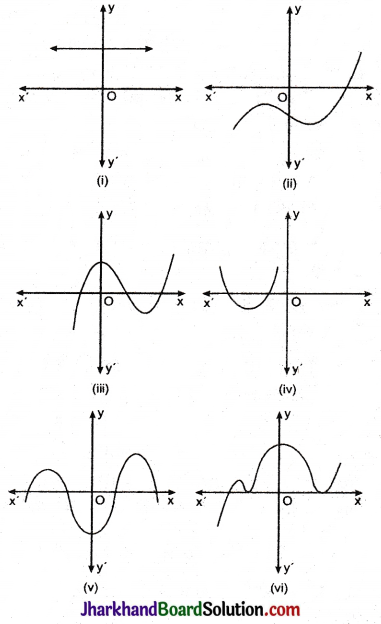
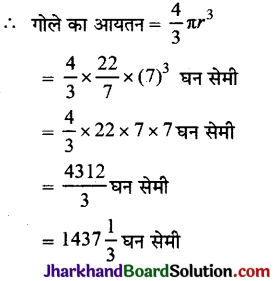
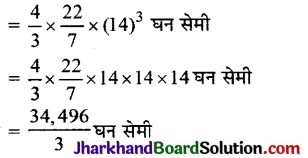

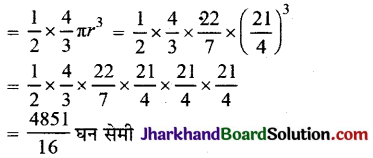
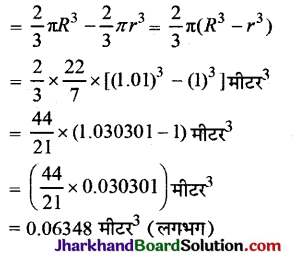
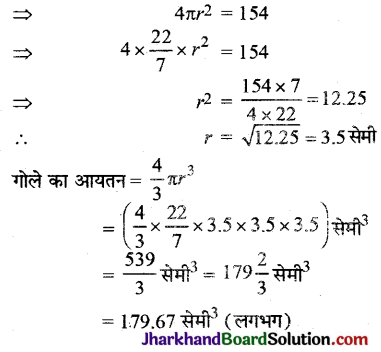
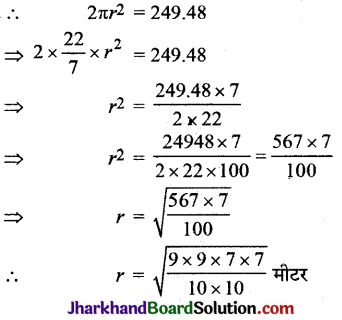
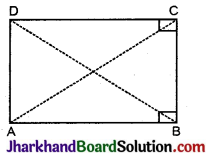
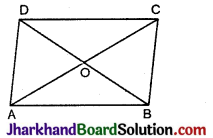
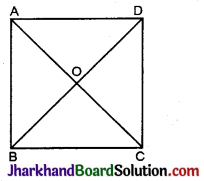
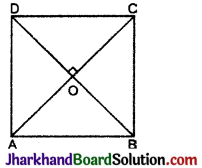
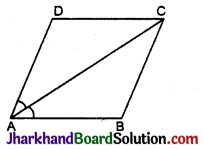

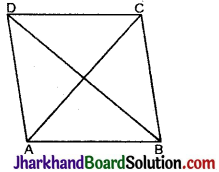
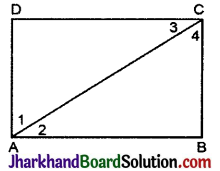
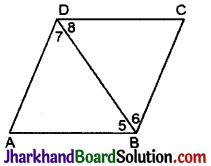

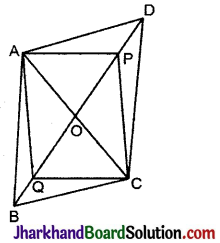
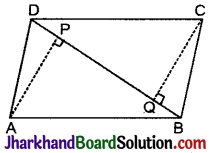
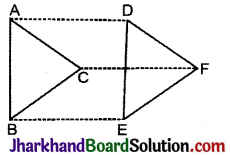


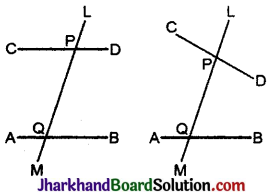
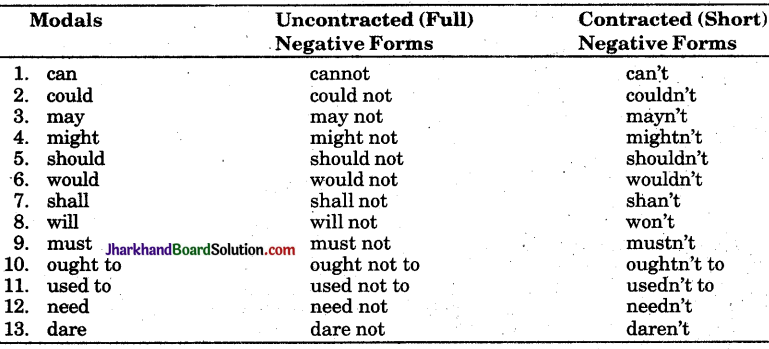

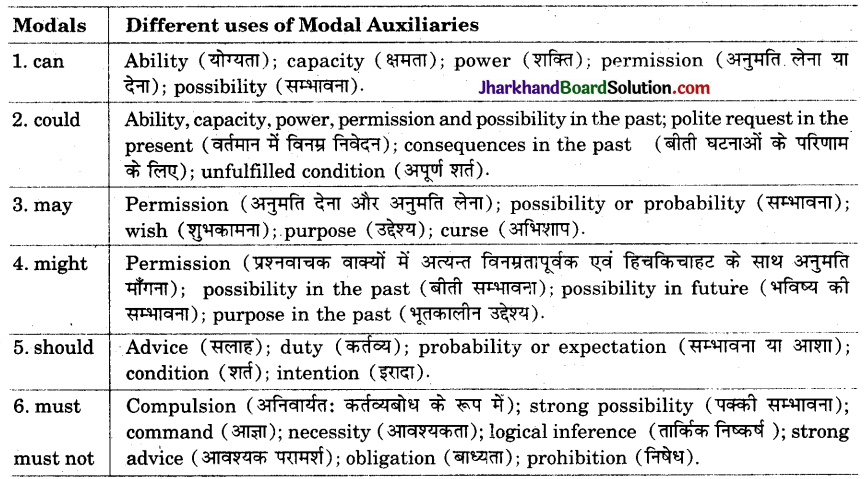 Note : यद्यपि निम्न तीन Modals आपकी कक्षा IX के पाठ्यक्रम में नहीं हैं। फिर भी ये तीनों दैनिक जीवन में बहुत उपयोगी है। अतः इन्हें दे रहे हैं।
Note : यद्यपि निम्न तीन Modals आपकी कक्षा IX के पाठ्यक्रम में नहीं हैं। फिर भी ये तीनों दैनिक जीवन में बहुत उपयोगी है। अतः इन्हें दे रहे हैं।